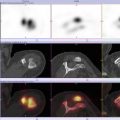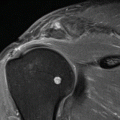Taunton et al. (2002)
Van Middelkoop et al. (2008)
Buist et al. (2010b)
Bredeweg et al. (2012b)
Patients with RRI visiting clinic
Marathon runners – injuries in previous year
Recreational runners during 8-week training
Novice runners during 2–3-month training programme
Injured runners (N)
N = 2,002
N = 397
N = 163
N = 58
Knee
42.1 %
30.7 %
38.0 %
39.7 %
Foot/ankle
16.9 %
22.9 %
11.7 %
12.1 %
Lower leg
12.8 %
–
–
–
Lower leg/Achilles/calf
–
39.4 %
41.1 %
29.3 %
Hip/pelvis
10.9 %
–
–
–
Hip/groin
–
17.9 %
8.6 %
–
Hip/back
–
–
–
15.5 %
Achilles/calf
6.4 %
–
–
–
Upper leg
5.2 %
12.3 %
3.7 %
3.4 %
Lower back
3.4 %
–
6.7 %
–
Others
2.2 %
–
13.5 %
–
Table 49.2
Distribution of the most common RRIs
Taunton et al. (2002) | Nielsen et al. (2013) | |
|---|---|---|
Patients with RRI visiting clinic (all injured) | Incidence of RRIs in inactive persons taking up running | |
N = 2,002 | N = 931 | |
MTSS | 4.9 % | 4.2 % |
Achilles tendinopathy | 4.8 % | 1.6 % |
PFPS | 16.5 % | 2.9 % |
Stress fractures | 4.3 % | – |
Iliotibial band friction syndrome | 8.4 % | – |
Plantar fasciitis | 7.9 % | – |
Hamstring injuries | 2.3 % | 0.8 % |
Gastrocnemius injuries | 1.3 % | 1.1 % |
Ankle sprains | 0.8 % | – |
49.5.1.1 Medial Tibial Stress Syndrome (MTSS)
MTSS (also known as shin splints) is characterised by pain at the posteromedial border of the tibia. It is thought to be the result of a imbalance between bony resorption and bone formation of the tibial cortex. Bony resorption takes place at a higher rate than bone formation (Magnusson et al. 2001). This theory has replaced the original theory that MTSS is caused by traction-related periostitis. MTSS is more common in women than in men, and hyperpronation of the foot during running is thought to be one of the main running-related risk factors (Reshef and Guelich 2012).
49.5.1.2 Achilles Tendinopathy
Two types of Achilles tendinopathy can be distinguished: insertional tendinopathy and mid-portion tendinopathy. Tendinopathy consists of a short acute inflammatory stage, but after some time it gradually becomes a degenerative condition (Abate et al. 2009). Chronic tendinopathy is characterised by a disorganised tendon structure, thickening of the tendon with increased ground substance and formation of peri- and intratendinous vascular sprouts and nerve endings (neurovascularisation). These changes, however, do apply to mid-portion tendinopathy whereas often the insertion site (enthesis) where the tendon connects to the bone is involved. Reasons why the osteotendinous junction is often affected are the low flexibility, the arrangement of fibres in relation to the direction of muscle force and a small insertion zone compared to muscle size (Renstrom and Hach 2005). Risk factors for Achilles tendinopathy related to running are a lateral rollover following heel strike and diminished forward force transfer underneath the foot (Van Ginckel et al. 2009). The later rollover may cause Achilles tendinopathy because of diminished shock absorption and increased stress on the lateral side of the tendon, whereas the diminished forward force may result in a reduced moment of the plantar flexors, which may be compensated by increased Achilles tendon forces, and thereby increased strain.
49.5.1.3 Patellofemoral Pain Syndrome
Patellofemoral pain syndrome (PFPS) is characterised by anterior knee pain in or around the patella, related to activity. PFPS is one of the most common causes for knee pain seen in primary care (Bahr et al. 2012). PFPS may result from increased cartilage and subchondral bon stress (Fredericson and Yoon 2006) and should be distinguished from patellar tendinopathy which involves the attachment of the patellar tendon to the patella. The risk factor that is most often associated with PFPS is weaker knee extension strength (Lankhorst et al. 2012b) Others factors for which there is some evidence that they are related to PFPS are a larger patellar tilt angle, lower peak torque knee extension, larger Q angle, larger sulcus angle, lower hip abduction strength and lower hip external rotation strength (Lankhorst et al. 2012a). Risk factors related to running are an excessive impact shock during heel strike and propulsion phase (Thijs et al. 2008), which results in high loads on the patellofemoral joint, and a less pronated position of the foot at heel strike and a more lateral rollover (Thijs et al. 2007), resulting in a supinated position of the foot and a less internally rotated tibia, leading to an increased Q angle, which would influence the patellar tracking and increase contact pressures.
49.5.1.4 Stress Fractures
Stress fractures of the lower leg and foot are typical in runners and are characterised by localised bone tenderness and oedema. In the lower leg, they occur most often in the distal and proximal part of the tibia and in the distal part of the fibula. In the foot they occur in the navicular bone and the metatarsals. The most common location for stress fractures among runners is the tibia (Lopes et al. 2012).
Stress fractures typically occur a few weeks to a few months after training has started (Bahr et al. 2012). Two theories, that are not mutually exclusive, exist about the aetiology of stress fractures (Sanderlin and Raspa 2003). According to the first theory, osteoclastic activity precedes osteoblastic activity by a few weeks, making the bone susceptible to injury during this period. The second theory finds the explanation for stress fractures in high stress on the bone at the insertion point of the muscles, which leads to bending stresses. A foot arch that deviates from normal may be a risk for tibial stress injuries (Barnes et al. 2008). Also, high vertical loading rates during running seem to be a risk factor for stress fractures in the tibia and metatarsals (Zadpoor and Nikooyan 2011).
49.5.1.5 Iliotibial Band Friction Syndrome
This injury is also known as runner’s knee and is characterised by lateral knee pain near the lateral femoral condyle (Bahr et al. 2012). Repetitive friction between the iliotibial band and the femoral epicondyle is thought to be the cause of this condition, which is therefore termed ‘iliotibial band friction syndrome’. Some however have questioned this account and have argued that pain is caused by compression of the tissue between the tract and the epicondyle and have proposed ‘fascia lata compression syndrome’ as a more accurate name (Fairclough et al. 2007). Hip abductor weakness has been implicated in the onset of iliotibial band friction syndrome, although there is conflicting evidence regarding its role, and there is some evidence that early hip flexion and early knee flexion may be related to iliotibial band friction syndrome (van der Worp et al. 2012).
49.5.1.6 Plantar Fasciitis
Plantar fasciitis is an enthesopathy that occurs at the proximal attachment of the plantar fascia to the calcaneus and is associated with heel pain. As in tendinopathy it is a degenerative condition, although lacking an initial inflammatory stage, and is therefore sometimes called ‘plantar fasciopathy’. Sometimes a heel spur is formed (Bahr et al. 2012). Risk factors for plantar fasciitis are increasing age, being female, increased body weight and running/playing on hard surfaces (Orchard 2012), whereas biomechanical running-related risk factors are higher impact peaks and loading rates (Pohl et al. 2009).
49.5.2 Acute Injuries
Besides these overuse injuries, acute injuries do also occurs in runners, although less often. Acute injuries, especially muscle injuries, are more common in sprinters and middle-distance runners than in long-distance runners (Lysholm and Wiklander 1987). Common acute RRIs are hamstring muscle injuries, gastrocnemius muscle injuries and ankle sprains (Table 49.2).
49.5.2.1 Hamstring Muscle Injury
Hamstring muscle strain injury is a typical sprint injury. Most often the biceps femoris muscle is involved (Bahr et al. 2012), although depending on aetiology other anatomical locations can be affected (Askling et al. 2000). Risk for injury to the hamstring during sprinting is highest during the last part of the swing phase when the hamstrings are eccentrically contracting (Heiderscheit et al. 2005; Schache et al. 2010), and in line with this, it has been shown that eccentric weakness of the hamstrings increases the chances of reinjury (Lee et al. 2009).
49.5.2.2 Gastrocnemius Muscle Injuries
The injury at the gastrocnemius muscle tissue has also been termed “tennis leg” and is most common in middle-aged people (Froimson 1969). Subjects often describe sensation of the rupture as “having been struck on the back of the calf” and sometimes report “hearing a snapping sound” (Russell and Crowther 2011). The muscle-tendon junction of the medial gastrocnemius head is the most common location for ruptures of the gastrocnemius muscle (Delgado et al. 2002). Simultaneous forced dorsiflexion of the ankle and knee extension is thought to be the primary cause of this injury (Froimson 1969), a situation that can occur during the stance phase of running (Johnson and Buckley 2001).
49.5.2.3 Ankle Sprains
Inversion ankle sprains are more common than eversion ankle sprains. In inversion ankle sprains, the lateral ligaments of the ankle are involved, and there is tenderness and swelling around the lateral malleolus. Three grades of severity are distinguished, ranging from mild stretching of the ligament complex without joint instability (grade 1) to partial rupture (isolated rupture of one ligament) with mild instability (grade 2) and to complete rupture with instability (grade 3) (Struijs and Kerkhoffs 2010). The most common injury mechanism of inversion ankle sprains during running is a combination of excessive supination of the rear foot and external rotation of the lower leg soon after initial contact of the foot (Hertel 2002). A lateral situated centre of pressure during initial contact is a risk factor for inversion ankle sprain as well as a mobile-foot type (Willems et al. 2005).
49.6 Conclusion
The incidence of RRIs is substantially high, and although there is a large body of literature on the subject of risk factors for RRIs, there is little consistency on the reporting of incidence, the aetiology and the risk factors of these injuries. The two most important factors for the occurrence of injuries in runners are higher running mileage and previous injury. Further research into specific injuries is required to determine the exact aetiology.
References
Abate M, Silbernagel KG, Siljeholm C, Di Iorio A, De Amicis D, Salini V et al (2009) Pathogenesis of tendinopathies: inflammation or degeneration? Arthritis Res Ther 11(3):235PubMedCentralCrossRefPubMed
Stay updated, free articles. Join our Telegram channel

Full access? Get Clinical Tree







